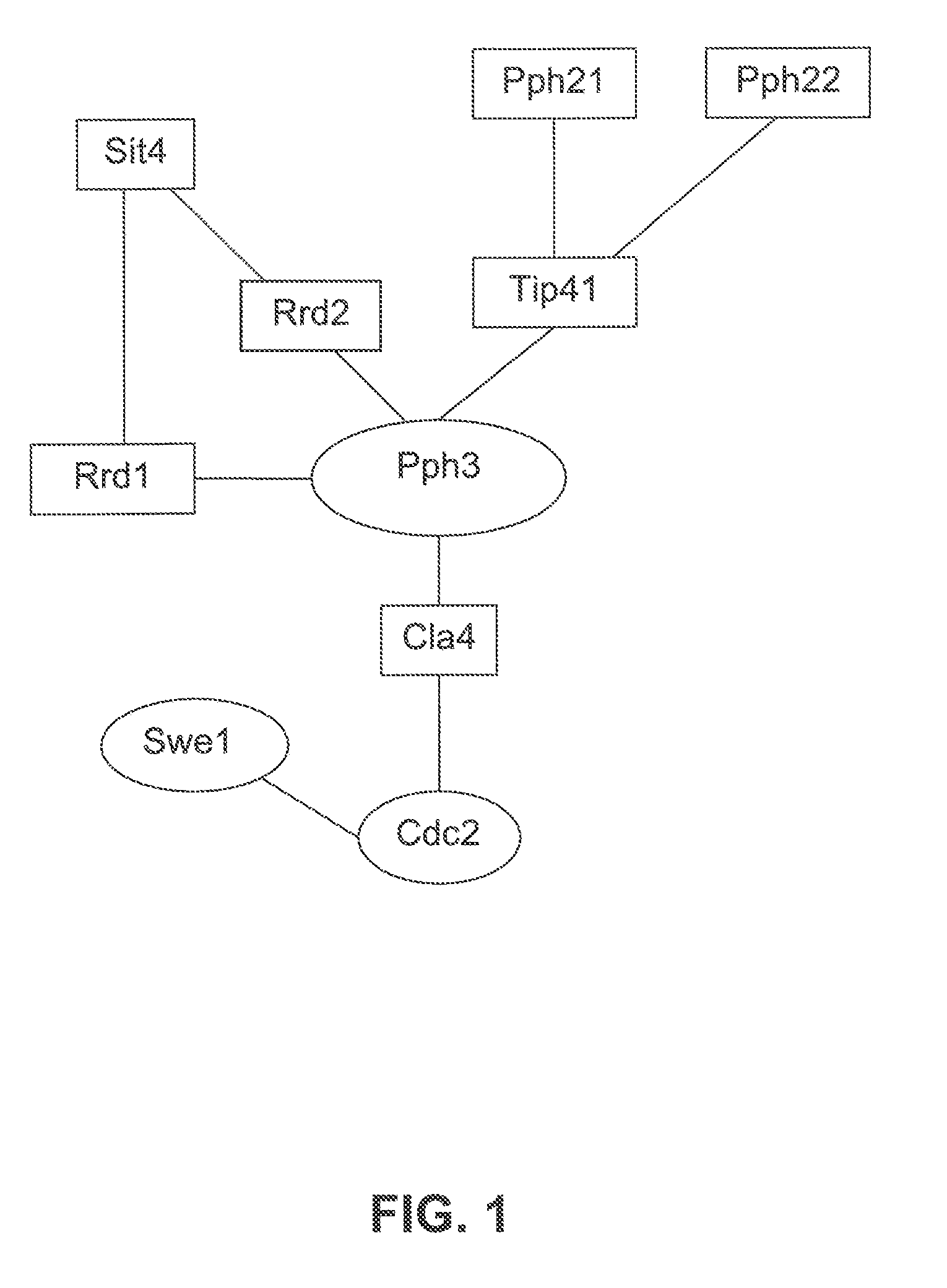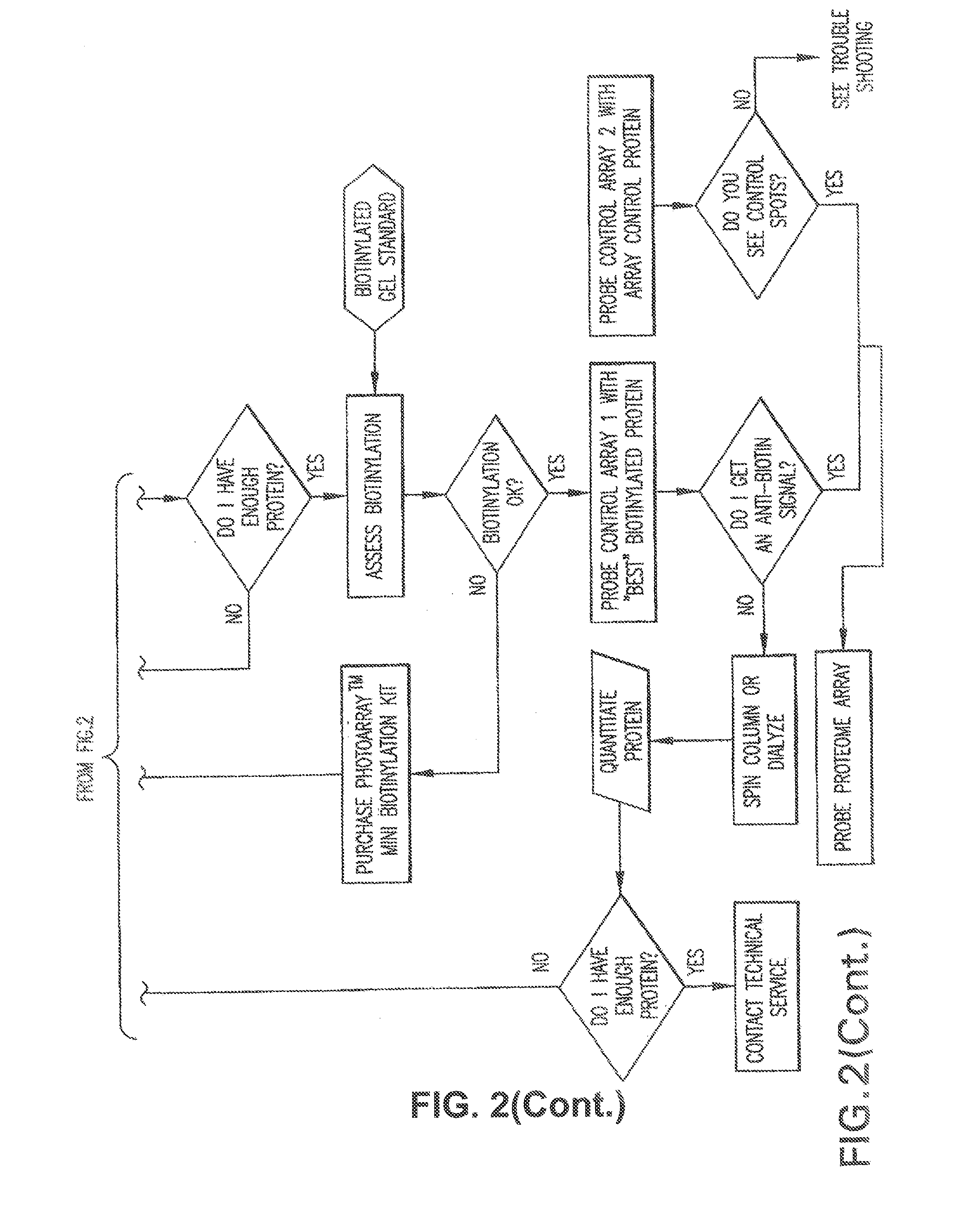Method for providing protein microarrays
a protein microarray and protein technology, applied in the field of biomolecular analysis and biotechnology products, can solve the problems of poor side effect profiles of currently available drugs, side effects, and inability to use intended effects,
- Summary
- Abstract
- Description
- Claims
- Application Information
AI Technical Summary
Benefits of technology
Problems solved by technology
Method used
Image
Examples
example 1
Yeast Protoarray PPI Kit
[0310]The Yeast ProtoArray™ PPI (Protein-Protein Interaction) Kit is shipped as detailed below. Upon receipt, store as indicated. For details on each component, see below.
[0311]All kit components are stable for 6 months when stored properly.
Kit ContentsShippingStorageYeast ProtoArray ™ PPI Proteome MicroarrayBlue ice−20° C.Yeast ProtoArray ™ PPI Control MicroarrayBlue ice−20° C.ProtoArray ™ Buffers Module ADry ice−20° C.ProtoArray ™ Buffers Module BBlue ice 4° C.ProtoArray ™ Mini-Biotinylation ModuleDry ice−20° C.ProtoArray ™ Biotinylation Purification ModuleBlue ice 4° C.ProtoArray ™ Biotinylation Assessment ModuleBlue ice 4° C.
[0312]Yeast ProtoArray™ PPI Proteome Microarray Box contains a mailer with PPI Microarrays 2 yeast proteome microarrays and Yeast ProtoArray™ PPI Control Microarray Box contains a mailer with 2 control microarrays.
[0313]The following components are included in the ProtoArray™ Buffers Module A.
[0314]Sufficient Buffers are included to p...
example
[0410]If the protein concentration of your sample after column purification is 0.5 mg / ml and the MW of your protein is 50,000 Da, calculate the final volume as follows:
5×106×0.550000=50µl
[0411]Dilute 1 μl of each sample for this example with 49 μl 1× Dilution Buffer to generate a 200 fmoles / μl stock solution for each sample.
[0412]Prepare the following dilutions of the biotinylated protein sample and BSA Control Protein after column purification for assessing biotinylation.[0413]1. Prepare a 200 fmoles / μl stock solution for each sample using the formula for SDS-PAGE described above.[0414]2. From the 200 fmoles / μl stock solution for each sample, prepare the following dilutions:[0415]Dilute 1 μl of 200 fmoles / μl solution from each sample with 9 μl with 1× Dilution Buffer to generate the 20 fmoles / μl sample (total volume is 10 μl).[0416]Dilute 2 μl of 20 fmoles / μl solution from each sample with 6 μl with 1× Dilution Buffer to generate the 5 fmoles / μl sample (total volume is[0417]3. Prep...
example 2
Method for Predicting a Biological Pathway
[0596]The following example illustrates the use of protein array data in combination with biological pathway knowledge and other data types, to generate biological pathway diagrams that indicate a predicted role of a test protein in a biological pathway. A protein array containing the majority of proteins from the yeast S. cerevisae was probed with a yeast protein phosphatase (Pph3). Two notable interactions were observed on the array. One interactor was identified as Tip41, a protein known to associate with Pph3 and a second interactor was identified as Rrd1 (Ito, T., et al., A comprehensive two-hybrid analysis to explore the yeast protein interactome. Proc Natl Acad Sci USA, 2001. 98(8): p. 4569-74). The function of Rrd1 is unknown but has been predicted to be a regulator of Pph3 because Pph3 overexpression can suppress the synthetic lethal phenotype of a rrd1,rrd2 double mutant (Rempola, B., et al., Functional analysis of RRD1 (YIL153w) a...
PUM
| Property | Measurement | Unit |
|---|---|---|
| molar ratio | aaaaa | aaaaa |
| temperature | aaaaa | aaaaa |
| temperature | aaaaa | aaaaa |
Abstract
Description
Claims
Application Information
 Login to View More
Login to View More - R&D
- Intellectual Property
- Life Sciences
- Materials
- Tech Scout
- Unparalleled Data Quality
- Higher Quality Content
- 60% Fewer Hallucinations
Browse by: Latest US Patents, China's latest patents, Technical Efficacy Thesaurus, Application Domain, Technology Topic, Popular Technical Reports.
© 2025 PatSnap. All rights reserved.Legal|Privacy policy|Modern Slavery Act Transparency Statement|Sitemap|About US| Contact US: help@patsnap.com



